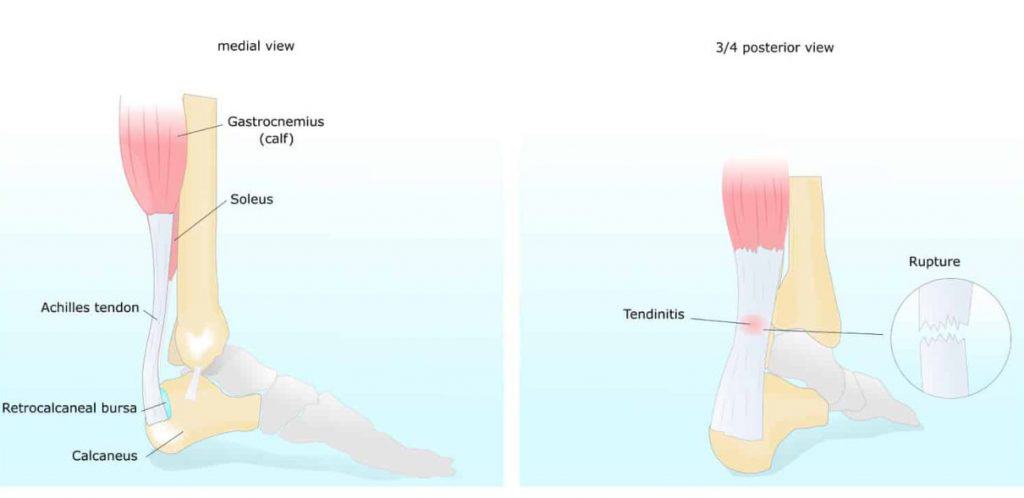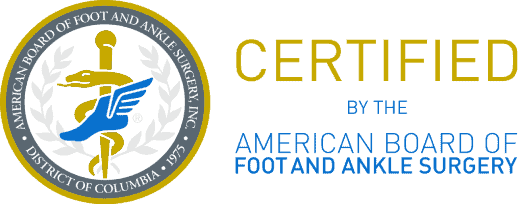Achilles Tendinitis in Children
Symptoms, Causes, and Treatment of Pediatric Achilles Tendinitis
Pediatric Achilles Tendinitus
The Achilles tendon runs along the back of the lower leg to connect the calf muscles to the heel bone. When it becomes inflamed, the condition is known as Achilles tendinitis. It is a fairly common condition, typically caused by overuse. Although most often seen in adults, Achilles tendinitis also affects children, particularly older kids who participate in sports.

Signs & Symptoms
The most common early sign of Achilles tendinitis is heel pain. This pain often strikes first thing in the morning, when the child first puts weight on their foot. But it also occurs after the child has been running or playing sports.
Other Achilles tendinitis symptoms include:
- Swelling and/or knots in the Achilles tendon
- Creaking sounds when you massage or move the tendon
- Shooting pain when you point the foot
- Weakness in the leg
- Pain when wearing shoes, particularly if they’re too tight
In adults, tendinitis may be confused with Plantar Fasciitis, and in kids, Sever’s Disease. It is important for your podiatrist, or pediatric podiatrist, rules these out first since these conditions are much more common than Achilles tendinitis.
What Causes Achilles Tendinitis In Children?
- Overuse – Repeated strain on the Achilles tendon through activities like running, jumping, or sports can lead to inflammation and irritation over time. Children who increase activity levels or intensity too quickly are at risk.
- Tight calf muscles – Inflexible or tight calf muscles put extra strain on the Achilles tendon. Limited ankle flexibility and range of motion contributes.
- Flat feet – Children with flat feet or overpronation place more stress on the Achilles tendon. The tendon has to stretch further with each step.
- Improper footwear – Shoes that lack proper arch and heel support increase tension on the Achilles. Rigid, unsupportive shoes are problematic.
- Growth spurts – Rapid growth phases where bones lengthen faster than muscles/tendons can lead to imbalance and inflammation. The Achilles can’t keep up.
How Is Achilles Tendinitis Diagnosed?
Dr. Jarman begins by taking your child’s medical history and conducting a thorough examination. Typically, he asks the child a number of questions, including whether they feel pain and when pain is worse.
If he believes your child has tendinitis, he may order diagnostic tests, such as x-rays or an MRI, to determine whether the tendon is torn.
Treatment
To begin, Dr. Jarman usually recommends resting the affected leg. This typically means abstaining from the activity that likely caused the problem. Ask Dr. Jarman about non-weight-bearing exercises like biking and swimming.
Resting allows the tendon time to heel. The doctor may also recommend:
- Stretching exercises
- Shoe inserts called orthotics
- Apply ice or cold packs
- Taping or wrapping the tendon and ankle
- Elevating the foot
- Over-the-counter medications to manage inflammation
- Physical therapy
- A walking boot or soft cast
Surgery is rarely needed to treat Achilles tendinitis in children.

Pediatric Achilles Tendinitis FAQ's
The most common symptoms are pain and stiffness along the back of the heel and ankle, especially when walking or exercising. Swelling, tenderness when touched, and reduced ankle flexibility may also be present. The pain often lessens with rest then returns when active.
Overuse from sports or repetitive activity is the most common cause in children. Tight calf muscles, improper footwear, growth spurts, obesity, and some medical conditions can also contribute to Achilles tendinitis.
A pediatrician or orthopedic specialist will diagnose Achilles tendinitis based on a physical exam assessing symptoms, ankle and foot flexibility, and the location of pain. Imaging like x-rays or MRI may be used to rule out other injuries.
The first line of treatment is usually rest, icing to reduce swelling, over-the-counter anti-inflammatories for pain, shoe inserts, and stretching/strengthening exercises. Wearing a heel lift can reduce strain on the tendon. If symptoms persist, a walking cast or orthotic may be used.
You should consult a doctor if your child has persistent heel or ankle pain, limping, or limited mobility that lasts more than a few days. The doctor can assess for tendinitis and recommend appropriate treatment. Early evaluation and care is key to properly healing tendinitis and preventing future re-injury.
Your Child's Feet Are Designed For Life



